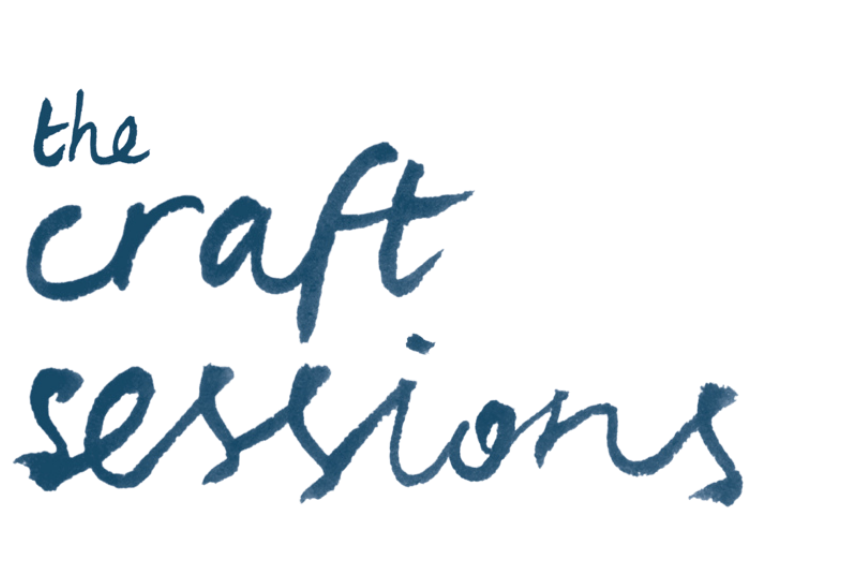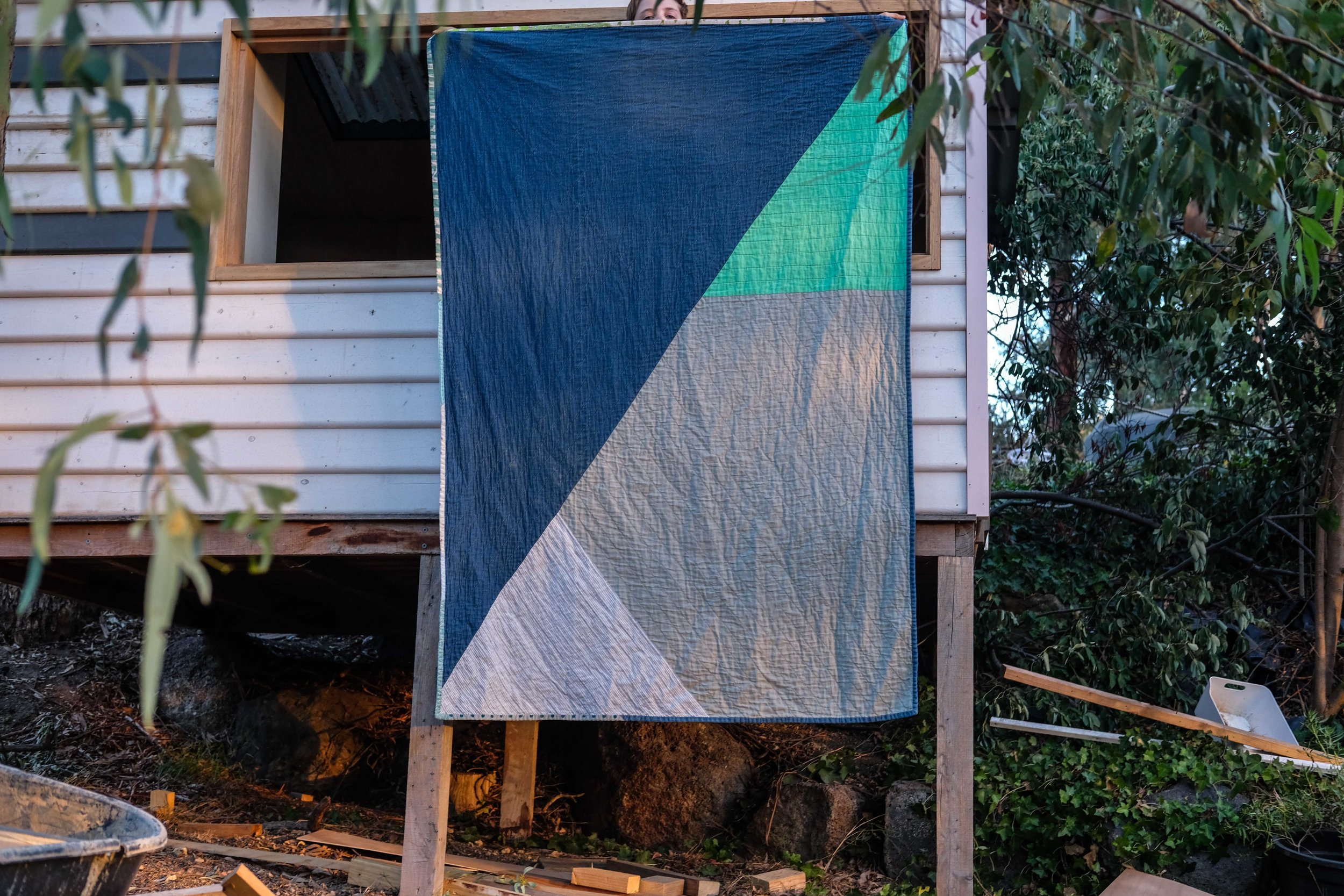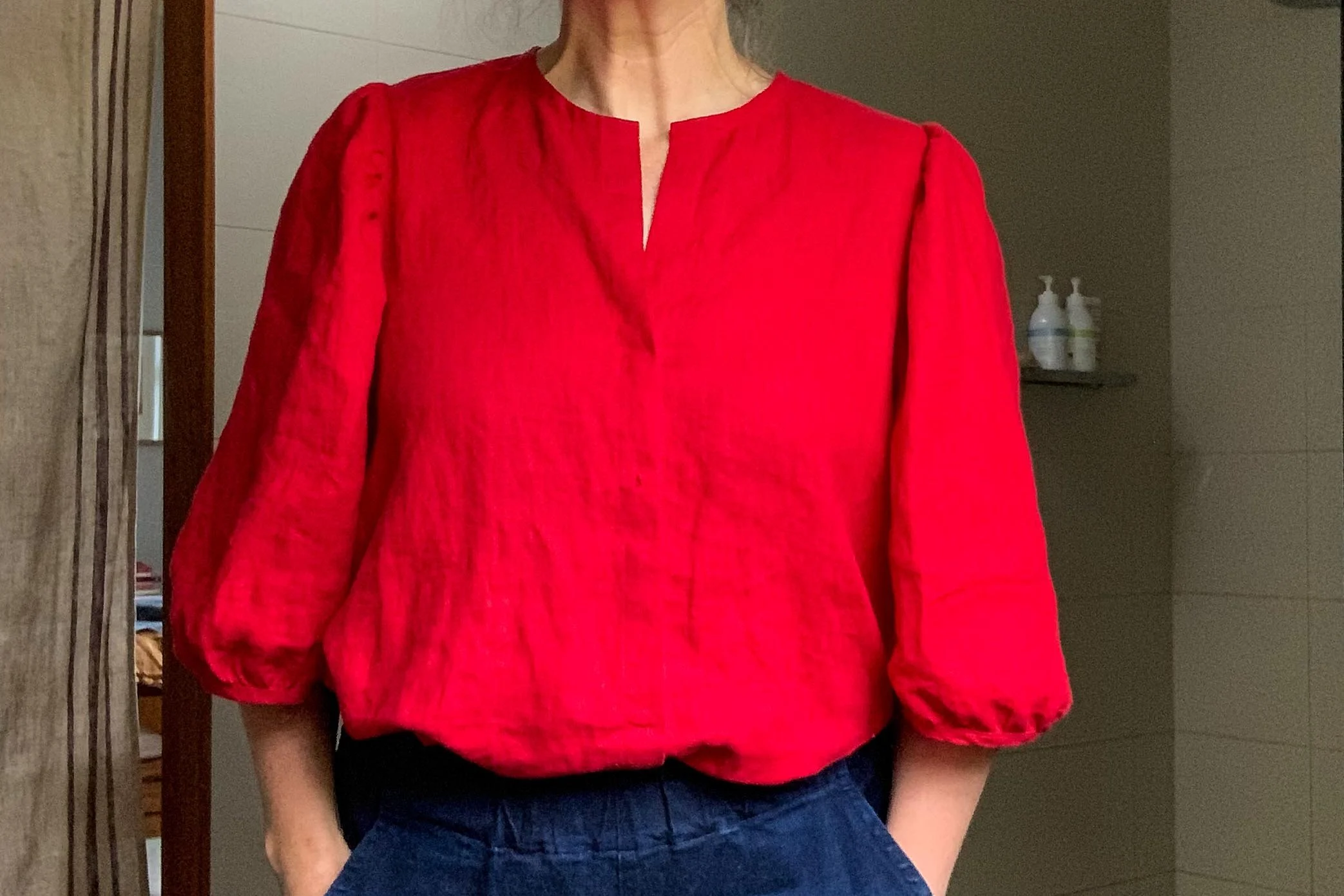This post is part of my ongoing project #theyearofthescrap - a series of posts about how we can use the waste we create during the making process. It should probably be called #thelifeofthescrap ?
As I get even more conscious and mindful about decreasing the resources I use - which means increasing the percentage of scrap projects I engage with - study has been essential to me learning to make the things that I want to make in a way that makes my heart sing. Because scrap projects, while fun, are not something I find easy to engage with.
Scrap projects are all about getting our materials - the textures and the colours - to work together in a cohesive, and hopefully beautiful, way. For me, this means approaching these projects with a different mindset; a mindset that isn’t constrained by perfection or an ideal. Instead it’s a creative mindset, a problem-solving mindset. A practice that involves attempting to combine what I know about what works, with what I have at hand.
A scrap project involves sitting with uncertainty - because there is no roadmap. We aren’t simply making a pattern with the yarn/fabric that’s specified. We are off-piste, in the back country, with the wolves and the wombats. This means we need to get curious about what we have at hand, learn what we can about the surrounding wilderness, and be willing to make mistakes along the way in order to get where we want to go.
The learning “what we can” is what this post is about. It is about my study to get better at the parts of my craft that I don’t know or understand - which for me is not necessarily about learning the technical skills of making - but rather it’s about learning about how to make things that I love by using my materials in a way that delights me. I find this process tricky but also incredibly satisfying when I can make it work.
The joy of a scrap-project-win is often everlasting due to the process that we went through to get that win. There is satisfaction to be found in the learning we inevitably have to do, and in our overcoming the possibility that it might not work. Excitement lives hand in hand with fear.
One thing I think about a lot, is the difference between a handmade object that (subjectively) sings, and one that is (subjectively) “just OK”*. Why is it that the same quilt pattern can be a thing of beauty, or fall totally flat? From what I’ve observed, it is rarely about the mechanical skills of the maker. Instead I believe it comes down to the skill of the maker in choosing materials and combining them well.
*I want to highlight subjectively because subjectively is all that matters. Who cares what others think of whether the thing we made is beautiful. What matters is what makes us happy, and what we think sings! Our own taste matters. We aren’t in the crafting olympics, and so our goal is simply to make something that pleases us or the person we are making it for! Subjective intrinsically-pleasing making for the win.
My Shifty scrap sweater was ripped back ala Ripping With Joy as the sizing was wrong, but I am chuffed with the colours. To make it I’ve spent time looking at how other people have used colour in their versions of the sweater. Where are their colour changes sitting? How often are the colours changing? Are they blurred changes or stark stripes? etc.
One of my favourites is Drea’s original version. How much contrast is there overall? Where are the bands of high and low contrast sitting? How wide are the stripes of background colour and foreground colour? How can I create the same effect created by the (stunning) special yarn she chose, with my pile of scraps??
One of my favorite scrap projects is quilting. Technically quilting is mainly just sewing straight lines - involving simple techniques that I truly believe anyone could learn if they wanted to. And yet, some quilts sing and some quilts don’t.
There are quilt makers that blow me away with their capacity to put colour together. I wrote a whole series about it a few years ago called I Was Totally Wrong About Patchwork - where I list a bunch of quiltmakers whose work I adore. If you want to quickly see what I am talking about then have a look at the feed of Kiva Motnyk of Thompson St Studio or the wonderful Maura of Folk Fibers.
So many of the quiltmakers I love have done art degrees or have art backgrounds which I’m assuming means that they have studied all the things I’m encouraging you to study in this post. They have studied the masters, painters, sculptors, and quilters they love. They have learnt about colour and form, and then they had had years of practice at their given craft. They have years invested in thinking about, and learning about, the thing they do…..which is what I believe makes their work so truly beautiful.
I’ve also witnessed this in my wonderful friend Anna Farago. If you look at her feed and really look at her quilts you can see she a little about how she thinks! Her understanding of colour and form always surprise me and often floor me…. and make me a very different quilter to her. I don’t have an art background, I don’t have her skillset but I can learn from her and others like her. She has taught me so much over the years and I’m grateful for her encouragement to think like an artist and deconstruct what I love.
Now I can’t do what they can do - most people can’t - and yet that doesn’t matter. Instead I simply try to practice in the gap and make quilts that please me by learning as much as I can from observing and studying those makers who are able to make quilts that sing. And so, I’ve made a choice to make actively studying the quilts of people whose work I love part of my making practice.
Over the years I’ve learnt a lot from loving, appreciating and deconstructing their work - just like one would do I imagine if one was studying art in art school. Much in the same way that we can learn about art by studying the work of artists, I’ve studied how to use colour in my knitting, clothes, and quilts by studying the work of other crafters. I glean inspiration and ideas from the work of others, often from someone’s individual interpretation of a traditional pattern. *
The idea for this quilt came from a work by Louise Bourgeois and the beautiful Hopewell quilts.
“Most of us only find our own voices after we’ve sounded like a lot of other people. But the one thing that you have that nobody else has is you. Your voice, your mind, your story, your vision. ”
When chatting to my friend last week about this post she stated - apologies for my terrible paraphrasing - that in some cultural settings, learning starts with copying as the means understand the process. And that through copying, over time, we develop judgement and taste and ideas, and incorporate them into our work. But she added that even when we are “copying” we really aren’t making a copy as with each brush stroke or colour choice we are making it our own, as we can’t not. And so no copy in this context is ever really a copy.
Such a beautiful framing!
Now I still don’t know what my quilting voice will be - maybe I will never fully understand it or be as good as I would love to be - as I don’t plan on making tens of quilts. But in the mean time I’m practicing and learning by making and studying. By study I mean that I actively try to break down quilts I like and the sweaters I love, and look at the way the makers I love have used colour, texture and placement to make something truly beautiful.
Some of the types of questions I ask myself;
Fabric/Yarn Choice: Is the fabric/yarn they have used flat or does it have texture like a linen? Is it shiny? Does it have depth? Does it have a halo? Is it blurry or crisp?
Colour depth: Is the colour they have used flat, solid colour, or is there variation like a tweed/fleck/naturally dyed variation? Do some fabrics have a different warp and weft?
Contrast and Value: How much contrast do they use, and where do they use it? Are all the colours similiar in value? How do they mix the value across the piece of work?
Negative Space: How is colour placed? Is it grouped? Or is it spread apart on the quilt/sweater/dress and how?
Colour Balance: How much colour is used? A little or a lot? Are the colours bright or neutral? What is the balance between them?
Construction Choices: Are the lines straight or wonky? Is it intentionally crisp or more rustic? Is there a border(quilting)? Is there fading (knitting)? ….
I wrote about more of my super-loose process in “Why All Crafter’s Need A Visual Diary”! But when I wrote the post it was a relatively new idea for me.
These days study is a really valuable and nurturing part of my making practice. I leave books on the dining room table so that I can keep going back to them day after day while I’m having a coffee in the morning. When I am researching a new project I take more time in the “ideas” phase of the project to ensure that I have considered it carefully. I make less on a whim and make more with intention.
In the case of the quilt at the top of the post - my daughter had seen a quilt on pinterest and asked “can you make me one exactly like that mama!” It was a quilt by Maura of Folk Fibers (who has a wonderful how-to quilt video series available if you are a quilting beginner!) and I’ve posted our quilts below side by side. The actual request was “can you make me one exactly like that mama but with brown and yellow (because of my kid’s football team) and pink for the middle” as that is what she had chosen.
Maura is someone with an art background that has made many many quilts. She is also a great example of someone who shares her knowledge and love of her craft widely and passionately. I learn something every time I look at her feed, and as a learner I’m very grateful for all she shares. Without being able to learn from Maura and her work, I could not have made this quilt. A quilt that my daughter adores and I feel proud of.
Please note that I used the photo below with permission from Maura!
And because colour combinations often stump me - I took a colour wheel and plotted how Maura’s (from Folk Fibers) quilt below transitioned from one colour to another to better understand how these colours combined. But then I tried to understand how to put colours together better by studying what made Maura’s so beautiful. I followed how she used her light and dark and you can see that my quilt works (subjectively :)!) because of what I followed from hers.
You can also see some real differences in how these quilts look - in part because of my brief but also because of the difference in our materials. I was limited in that I couldn’t use naturally dyed fabrics as Maura did as I’m not a natural dyer, so I chose linen that had a different warp and weft to try and mimic the depth that naturally dyed fabrics have. Flat colours in this quilt look totally different as a quick search on pinterest will attest to. Also notice that to mimic the different colours Maura has in each layer, I have actually used different colours. This is most noticable in my quilt in circle two and circle 7.
Photo used courtesy of Maura of Folk Fibers
Pink centre, brown and yellow for Hawthorn FC, and then what….
I should note - as this is a post about making scrap projects you love - that this quilt was made from a combination of scraps and purchased fabric. The study that I did for this quilt though and the process I went through to make something I love has improved both my skill and my confidence with colour. This has lead to the two quilts tops I have made since this quilt - including the one you saw in the post Craft As Becoming - both being made almost exclusively scraps. My making is a process of continuous improvement.
And more excitingly, when making the two quilts tops I have made since making this quilt I have gained not just confidence - but as Neil says I’ve found a little of my own voice. My latest quilt top was put together last week without the aid of a picture or a diagram or another quilt directly impacting the colour placement….. which is so very exciting (and I can’t wait to show it to you).
Part of what I have learned is that part of my study is actually the study of my own work, to see what it is about the things I have made that delights me or bugs me.
The importance of play.
The other thing I do - other than simply study - is to put what I’ve learned into practice in low stakes environments. I make sure that I allow myself to play in a space with few expectations where the expectation is that I will learn some things and that if I fail, I fail without attaching judgement or meaning to it. This playing is something I do every few months, not everyday and I think of it like a treat, or a crafter’s date if you will.
The cushion top below is an example of this play. I was experimenting with using colours that are a little outside my normal colour range…. and while I like it, it ended up being richer and more full on than I planned. I still have it sitting out on the floor a month or so later as I know that I’m still learning from it. The final result is more intense than I wanted…. so next time I’ll do some stuff differently.
The same blocks…
turned around make a different quilt.
Different borders….
change the feel.
I’m still learning, still failing and still trying to think of it as play. Because in the play there is freedom; the freedom to get curious and try. And the trying is where we get to really see if our ideas hold up. Planning, thinking, deconstruction and dreaming will only take us so far. We have to put the needle to the fabric - and practice hard - to really see whether what we have learned through our study works in practice, because our work is yet another form of study.
My hope is that this post encourages you to spend more time on study as a vital part of your making practice. But I’d also love to hear about who you’ve learnt from and what, if you are willing to share.
Felicia x
*A quick - and hopefully unnecessary - note on copying for profit: Copying an idea and making money off it isn’t cool, ever. Many people have written eloquently about fair use (and cultural appropriation) and I would encourage you to look them up if you aren’t sure. When I have been in doubt in the past I have been known to fling the person whose work I’m inspired by an email to check they are OK with my plans. Always better to ask.
** You can find Neil’s wonderful speech “Make Good Art” here.












